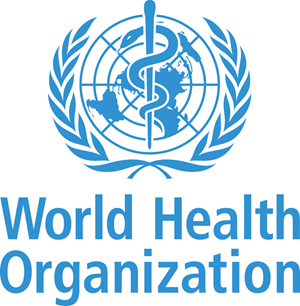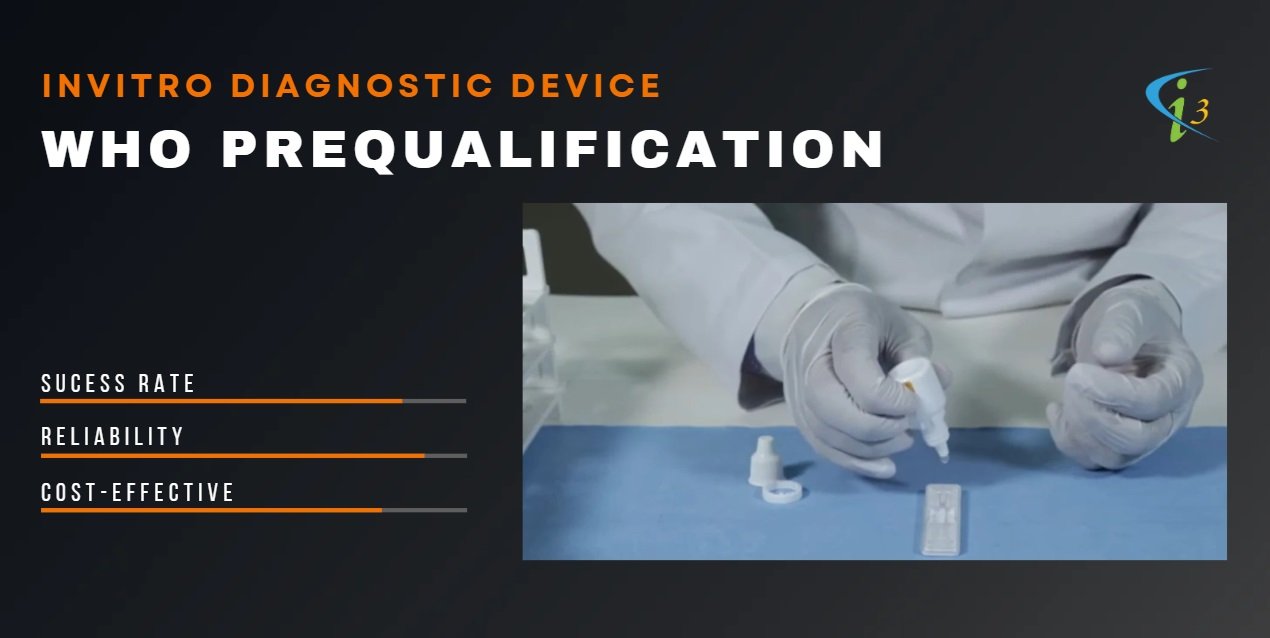

Quick Contact

WHO Prequalification IVD
The WHO Prequalification Program for IVD is a global initiative that ensures diagnostic tests meet international standards for quality, safety, and performance. It is primarily aimed at low- and middle-income countries to help them procure reliable IVDs for diseases like HIV, tuberculosis, malaria, and hepatitis.
The WHO PQ program ensures that IVD devices meet global standards for quality, safety, and performance, particularly for use in low- and middle-income countries. It is essential for manufacturers who want their IVDs to be procured by international agencies like UNICEF, the Global Fund, and WHO procurement programs.
Key Aspects of WHO PQ IVD!
Manufacturers seeking WHO PQ must demonstrate robust clinical evidence, quality management compliance, and consistent product performance. The program accelerates access to safe and effective diagnostics, supporting global health initiatives.
- Assessment Process: Includes document review, laboratory evaluation, and onsite inspections of manufacturing sites.
- Regulatory Standards: Aligns with ISO 13485 (Quality Management Systems for Medical Devices) and other WHO-specific requirements.
- Target Users: Governments, procurement agencies (e.g., UNICEF, Global Fund), and NGOs use WHO-prequalified IVDs for large-scale health programs.
- Post-Market Surveillance: WHO continues monitoring the performance of prequalified products through field data and periodic reassessments.
Manufacturers committed to high-quality IVDs and strategic financial planning can benefit from I3CGLOBAL’s technical and scientific consultancy, ensuring a faster WHO PQ and IVDR CE Marking approval process.
Key Differences Between WHO PQ and IVDR CE Marking
What Happens After WHO Prequalification?
Once a product successfully meets WHO prequalification requirements, it is added to the WHO List of Prequalified IVDs, which is publicly available on the WHO website. Following inclusion in the list, the manufacturer must adhere to ongoing responsibilities, including:
- Fulfilling prequalification commitments
- Submitting annual reports
- Reporting any product or manufacturing changes
- Meeting post-market surveillance obligations
- Undergoing periodic re-inspections
- Ensuring continued compliance with WHO Prequalification standards
Maintaining WHO PQ status requires continuous regulatory oversight and adherence to evolving quality and safety standards.

(Listen for 5 Minutes)
Role of WHO PQ Consultants
WHO Prequalification is a critical step for IVD manufacturers targeting global procurement programs. WHO PQ consultants streamline the process, ensuring compliance and increasing the chances of successful WHO approval. Obtaining WHO PQ can be complex, requiring strict compliance with WHO guidance, ISO 13485, and regulatory standards. WHO PQ Consultants play a critical role in:
- Regulatory Strategy & Gap Analysis – Assessing product eligibility for WHO PQ IVD and Identifying gaps in technical documentation and quality management systems.
- Technical Documentation & Dossier Preparation – Preparing Product Dossiers in line with WHO guidelines and ensuring compliance with ISO 13485 QMS requirements.
- Performance & Clinical Evidence Support- Assisting in performance evaluations for IVDs and ensuring sufficient clinical and analytical validation data for submission.
- Onsite Inspections & Quality System Compliance- Preparing manufacturers for WHO Good Manufacturing Practice (GMP) audits and Implementing corrective and preventive actions (CAPA) post-audit.
- Submission & WHO Liaison: Handling WHO interactions, submission follow-ups, responding to queries and supporting post-market surveillance (PMS) and requalification requirements.

Frequently Asked Questions
Does WHO Prequalification Help with IVDR CE Marking?
Not directly. WHO Prequalification does not replace CE Marking because IVDR has stricter regulatory requirements, particularly regarding clinical evidence and PMS compliance. However, a WHO-prequalified product with strong performance data may support the clinical evidence needed for IVDR certification.
Does CE Marking Help with WHO Prequalification?
Yes, CE Marking under IVDR can support WHO Prequalification, but it does not guarantee automatic qualification. If a product has already undergone stringent evaluation by an EU Notified Body under IVDR 2017/746, it may be eligible for the abridged WHO Prequalification assessment, reducing the burden of additional testing. However, the WHO still requires proof of performance in relevant global health settings, and a CE-marked device must still meet WHO-specific requirements.
Does CE Marking or WHO Prequalification - Which One Should Manufacturers Prioritize?
- If targeting European markets, IVDR CE Marking is mandatory.
- If seeking inclusion in global health procurement programs, IVD WHO Prequalification is essential.
- For manufacturers aiming for both markets, securing IVDR CE Marking first may streamline IVD WHO PQ via the abridged assessment route.
IVDR CE Marking vs. WHO PQ: Which is Better?
Both IVDR CE Marking and WHO PQ serve distinct purposes in regulatory compliance and market access for In Vitro Diagnostic (IVD) devices, making them difficult to compare directly. The choice between the two depends on a manufacturer’s target market, regulatory strategy, and business goals.
WHO PQ Guidelines for IVD. Where should I find the latest version?
Most of the information is available on the WHO website.
What is the Fee for WHO Prequalification Submission, Mentorship and Guidance?
As of 1st quarter of 2025, the fee is US$ 24000
What is the fee for WHO PQ consulting or what are the additional WHO PQ service charges?
The guidance and documentation fee depends on the IVD. The average WHO consulting fee is 26000 USD.
